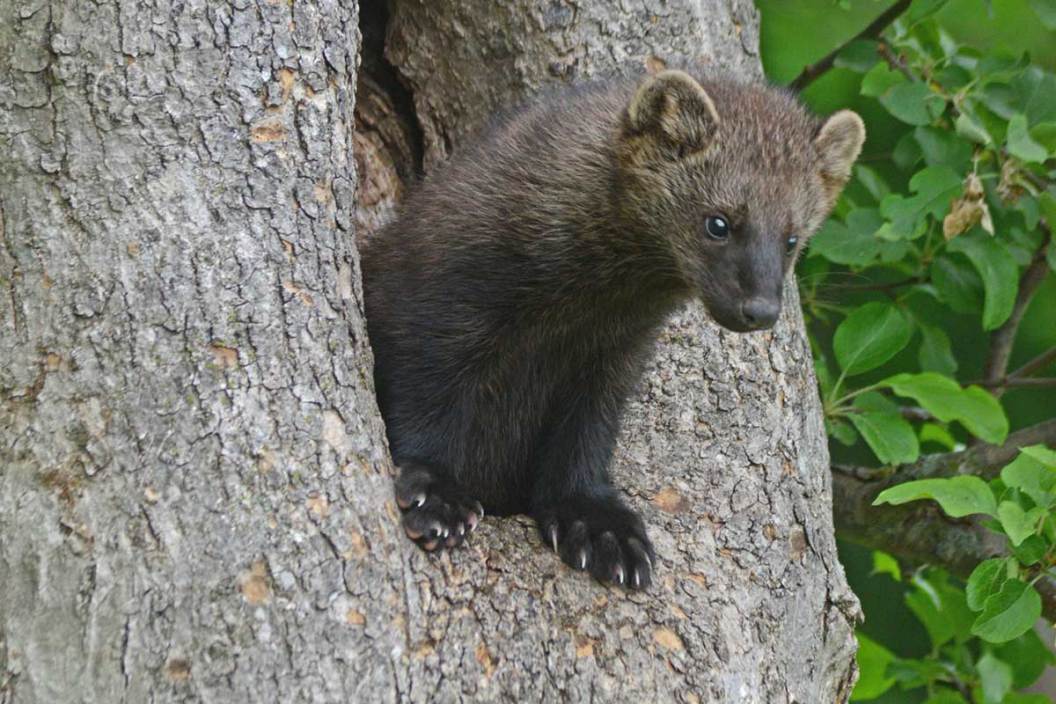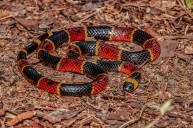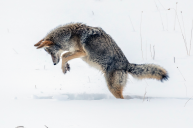I've got a pretty elaborate trail camera setup around my area of upstate New York, and I'm fond of following the deer, turkeys, and other game animals that make their way past the lenses. Of course, there are other critters that show up and make appearances, and I always get a little excited when a new animal is captured. That excitement was multiplied recently when I came across the clip you see below of a fisher, one of the region's most interesting inhabitants.
If you've ever been fortunate enough to see a fisher in the wild, you likely didn't see it as much of a threat, as it's not particularly large and doesn't seem especially aggressive at first glance. However, don't ever let yourself make the mistake of underestimating a predatory fisher, as its cute and cuddly appearance and mannerisms are wildly deceiving. Though instinctively shy and elusive, a fisher can turn ferocious is the blink of an eye. Many people even mistakenly refer to this predator as a "fisher cat," but there's nothing feline about it, as it's actually a member of the mustelidae family, which includes weasels, otters, and wolverines. For many years, the fisher's only real threat came from North American trappers and traders who saw the fur as a cash grab. Modern regulations do afford trappers the ability to legally harvest them again, thanks only to years of staunch conservation efforts that included strict seasons, habitat recovery, and reintroductions.
As soon as restoration success started become noticeable in the much of the fisher's original range, many outdoorsmen started confusing the fisher and the American marten. However, while closely related, the two actually have a few distinct differences, as the fisher about twice as big and considerably more aggressive. The fisher's fur is also much darker than that of the marten, whose fur is distinguished by the two black vertical lines that lead from just above their eyes to their forehead. Fishers, on the other hand, have much more rounded ears set close to their heads along with dangerous looking teeth and retractible claws. Someone without much experience in the outdoors may even mistake a fisher with another cousin, the mink, which like the marten is more often associated with rivers, streams, ponds, and other waterways, whereas the fisher is more of a boreal forest dweller.
The Fisher's Hunting Reputation
As with many predatory animals, the fisher is an opportunist feeder. This means it will actively hunt for prey, but will also supplement its diet with a variety of alternatives, such as insects, berries, and even carrion. The male fisher, which is larger than the female, typically weighs 9-15 pounds, which may not seem all that big, but the prey animals it will hunt are often even bigger. It's not above the fisher to target wild turkeys, rabbits, squirrels, snowshoe hares, or even porcupines (in fact, they're one of the only animals to do so). While fishers are known to kill porcupines by rolling them over and attacking their underside, it's actually more common for them to go after the head and face. Fishers aren't afraid of predators, either, as there's evidence that suggests fishers will even attack, kill, and eat Canadian lynx.
Fisher Habitat and Distribution
Fishers exist in the mostly in the northern tier of states and far into Canada, but there are populations south through Pennsylvania. Their existence is a big part of New York's Catskill and Adirondack Mountains and many live in the New England states, but wildlife officials have also reintroduced them in the Pacific Northwest all the way up into British Columbia.
These animals love to be in the woods and are excellent at climbing trees. While they are a resident of coniferous forests, they prefer mixed hardwoods and typical boreal forests, and they favor old-growth forests that have a lot of understory. Female fishers den in hollow trees in these areas for protection of the kits that are born in March and April. Interestingly enough, despite their favorite prey animal being the snowshoe hare, fishers don't actually do very well in areas that have a continuously deep snow.
As with many species, the fisher was nearly wiped out by the turn of the century by the fur trade for their excellent pelts. Today's trappers use either bodygrip traps or full size live traps to keep the loss of the fur to a minimum. In New York, trapping season dates start around the end of October or early November (depending on the region) and last until the end of November or early December. At this time, there are no bag limits for trapping fishers in New York.
Some sources indicate that fisher pelts are worth up to $30 per pelt, but are considered unique and limited in supply, meaning that the price could easily rise in the future.
Ultimately, fishers are a very interesting animal that is well worth learning more about. This animal preys on species that other creatures will leave alone, has a vicious disposition, and both the male and the female are highly skilled hunters. What's not to like?
Please check out my book "The Hunter's Way" from HarperCollins. Be sure to follow my webpage, or on Facebook and YouTube.





